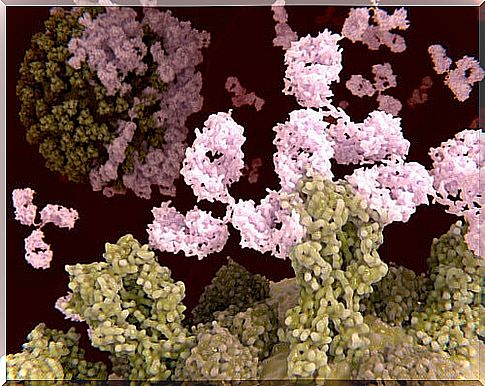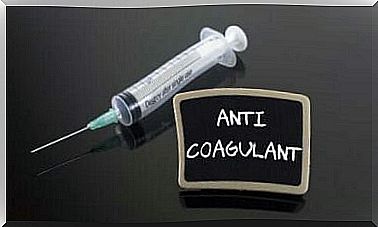Treatment Of Pneumonia
Treatment of pneumonia involves the administration of different antibiotics depending on the type of pneumonia you have.

The treatment for pneumonia will first and foremost depend on the type of pneumonia the patient is suffering from.
In this regard, the physician must take into account a number of important factors in determining the most appropriate treatment. These factors include the symptoms and also the age of the patient.
Pneumonia can be divided into two broad categories:
- Community-acquired pneumopathies : These are those that are contracted outside healthcare establishments.
- Nosocomial lung disease : Refers to those that occur in hospitalized patients.
In these cases, pneumonia is more serious because it is not the only condition to be treated in the person, but rather an additional complication.
These infections are usually caused by bacteria present in the hospital. They are more resistant in people who are weak or also in the process of recovery. For this reason, hospital pneumonia is also more difficult to treat.
All pneumonia can lead to sepsis, which is the spread of an infection in the blood.
Pneumonia can lead to death in the elderly and in immunocompromised people if they suffer from sepsis, so it is very important to establish an appropriate treatment for each case, as needed.
Although several treatments have been developed for different groups of patients, there is no need to rush into generalizations.
The doctor is best suited to indicate which of all the treatments is best for each patient. He is the best person to determine what is most effective for the recovery of the body under the circumstances.
How does pneumonia occur?
Pneumonia is caused by a bacterial, viral, or fungal infection. Depending on the cause or etiology, a type of treatment can be determined. To do this, we will review the 3 causes of this pathology:
Viral pneumonia
The most obvious example of this type of pneumonia is that produced by the flu virus or chickenpox.
Bacterial pneumonia
- Pneumococcus.
- Staphylococcus.
- Gram negative bacillus (-)
- Haemophilus influenzae.
- Klebsiella pneumoniae.
- Escherichia coli.
- Pseudomonas aeruginosa.
In this group, there are also the so-called atypical pneumonias, which are generally those whose evolution is slower, with an unclear clinical picture and whose causative agents are less common than in other cases.
The bacteria that cause atypical pneumonia are: Legionella pneumophila; Mycoplasma pneumoniae; Clamydia pneumoniae.
Fungal pneumonia
This type of pneumonia is caused by the presence of fungal organisms such as Pneumocystis jiroveci.
It should be noted that this type of pneumonia is more common in immunocompromised patients, for example those with HIV (human immunodeficiency virus) which also causes acquired immunodeficiency syndrome (AIDS).
Treatment of pneumonia
Pneumonia is usually treated by giving the patient antibiotics. Depending on the cause, the characteristics of the infection and the general health of the patient, a particular antibiotic is chosen or a combination of several antibiotics.
Here are the types of treatment according to the etiology.
Pneumococcal pneumonia
The most common pneumococcus causing this disease is Streptococcus pneumoniae . For this type of pneumonia, amoxicillin is given, but there is a high risk of resistance to this antibiotic.
In the case of resistance in the body, the following types of drugs are then used:
- Cephalosporins
- Clindamycin
- Cefuroxime
- Eritromycin (when the infection reaches more serious conditions)
There is also a vaccine against strep pneumonia. It is indicated for children and also people over 50 years old. But it does not prevent pneumonia caused by other causative agents, such as those mentioned above.
Staphylococcal pneumonia
In this group, Staphylococcus aureus is the main culprit. This type of pneumonia is treated with bacterial penicillin, which is also resistant to beta-lactamase.
For example :
- Flucloxacillin: it helps to counter the ß-lactamase (penicillinase) of the microorganism
- Cephalosporins : cephalotin, cefamandol
- Clindamycin: effective action against 90% of strains
Gram-negative pneumonia

Among the Gram-negative bacilli, the main ones causing pneumonia are:
- Haemophilus influenzae
- Klebsiella pneumoniae
- Escherichia coli
- Pseudomonas aeruginosa
And the treatments for each of them are:
- Haemophilus influenzae
The main drug is cotrimoxazole, which is an antibiotic combination of trimethoprim-sulfamethoxazole.
Other antibiotics include: Gram-negative spectrum cephalosporins, amoxicillin, fluoroquinylones, and also azithromycin.
- Klebsiella pneumoniae
This bacterium is resistant to ampicillin and also to a large number of β-lactamases. Despite its resistance, it is very sensitive to aminoglycoside antibiotics and cephalosporins.
- Escherichia coli
The treatment of pneumonia caused by this bacteria will require hospitalization of the patient in order to provide respiratory support also allowing adequate oxygenation.
In this case, the administration of fluoroquinones and 3rd generation cephalosporins such as: cefixime, cefpodoxime, ceftibuten, cefdinir is also chosen.
- Pseudomonas aeruginosa
A culture should be made for this bacteria and the appropriate treatment should be established based on the results of this culture, as this bacteria has resistance to many antibiotics.
Treatment of atypical pneumonia
Legionella pneumophila pneumonia
- The main medicine for legionella is erythromycin.
- When the situation is severe, erythromycin is usually combined with rifampicin.
- Ciprofloxacin or azithromycin, the main drugs for other conditions, are also used.
Pneumonia Mycoplasma pneumoniae
Most patients infected with this bacteria can also overcome the disease with or without treatment. In this case, the antibiotic of choice is erythromycin, but you can also choose other antibiotics:
- Tetracycline
- Clarithromycin
- Azithromycin
Pneumonia Chlamydia pneumoniae
This bacteria usually produces illness severe enough to require hospitalization as well. In addition, doxycycline is usually given, except in patients with chronic diseases associated with myocardial infarction or other complications.
Other drugs widely used in this infection are erythromycin and tetracycline, usually also given within 10 to 21 days.
Treatment of viral pneumonia

When the pneumonia is viral, it is recommended that you take antiviral drugs like acyclovir to treat lung infections caused by herpes simplex, shingles, or chickenpox.
Cytomegalovirus (CMV) pneumonia is treated with ganciclovir, although this treatment has not been shown to be effective in patients with AIDS.
Some patients subsequently develop bacterial infections requiring antibiotic treatment, and if the patient has a viral infection, medication is recommended to reduce fever, pain, and cough.
Treatment of fungal pneumonia
These antifungals are then administered :
- Amphotericin B
- Fluconazole
- Itraconazole
- Fluytosine
These medicines can also have side effects, you should contact your doctor if you have, for example:
- Increased sensitivity to the sun (especially ocular)
- Fever
- Chills
- Skin rash
- Itches
- Diarrhea
- Nausea
- Vomiting










